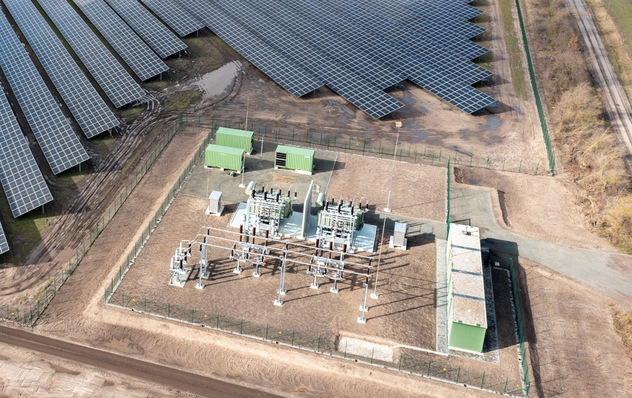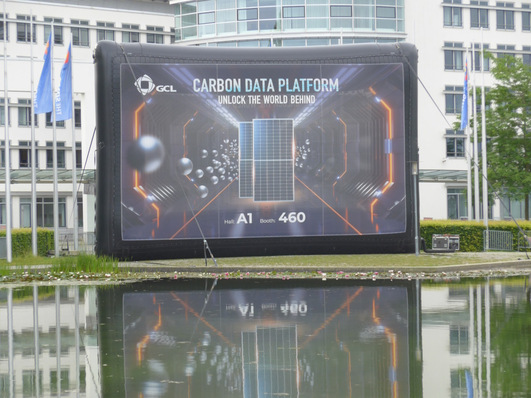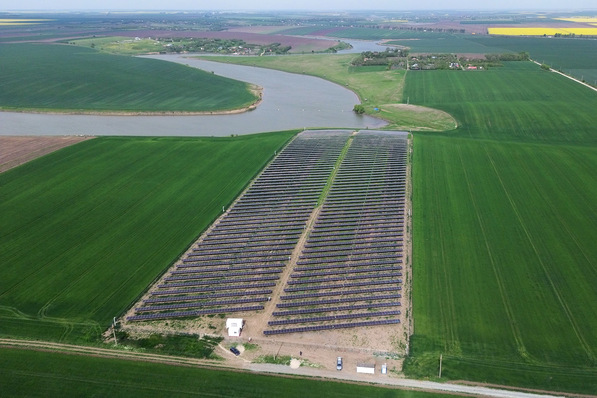Energy storage systems are in vogue. The industry generated sales of 12.1 billion euros in 2022, an increase of over 30% on the previous year. In 2023, even stronger growth of 40% to around 16 billion euros in sales is expected. This is the conclusion of an industry analysis commissioned by the German Energy Storage Systems Association (BVES), which was presented at the start of the Volta-X trade fair in Stuttgart on Tuesday.
Drivers for the booming market for energy storage systems are high energy prices, decarbonization obligations and the need for security of supply and flexibility.
In addition, the trend toward e-mobility is bringing further application opportunities for the storage industry in all three market segments: household, industry and system infrastructure.
The Ukraine war has shown that you can quickly run into problems "when the energy supply hangs on long pipelines," emphasized BVES Managing Director Urban Windelen. Resilience and decentralization are all the more important, he said. "Energy storage systems are indispensable when it comes to a stable and cost-efficient energy system," Windelen said.
Popular home storage and heat pumps
According to the industry figures presented, energy storage systems continued to grow the most in 2022 in private households. Companies in this market segment generated sales of €7.1 billion, up 61% on the previous year. The high energy costs for electricity from the grid are clearly driving the installation of PV and energy storage systems in buildings and private households For example, 75% of photovoltaic systems are now installed or expanded in a combi-pack with a storage system to increase lucrative self-consumption.
Around 650,000 battery home storage systems were installed in German households at the end of 2022 - with an average capacity of 8.8 kWh. German manufacturers are well in the running here with a market share of over 50%. The heating sector also grew strongly. 236000 new heat pumps were installed last year (plus 53%). Almost 40% of households that use energy storage also have a heat pump, and 36% also have an electric car.
Slowdown in demand from industry and commerce
Demand in the industrial and commercial sector was more subdued than for households. Although sales climbed to EUR 1.51 billion in 2022 (2021, EUR 1.24 billion), they remained below the previous year's forecast. "Unmet expectations for legislation and regulation, long approval processes and also the lack of skilled workers are still slowing down the use of storage systems in the industry," Windelen explained.
Also interesting: Tesvolt builds a second gigafactory
As an example of inhibiting legislation, he cited the lack of a permanent exemption for storage systems from grid fees and construction cost subsidies, as well as the exclusivity principle for energy storage systems in the Renewable Energy Sources Act (EEG). According to this, even the smallest amounts of grid electricity transform stored renewable electricity into gray electricity, and the entitlement to EEG subsidies no longer applies. This must be changed urgently, Windelen appealed to the politicians. In addition, the gas and electricity price brake inhibits the willingness to invest in clean technologies - for example, in the storage of industrial process heat.
Large-scale storage "boom" - renaissance of pumped storage
Windelen was satisfied with the demand for large-scale storage in the system infrastructure sector. Although sales were slightly below 2021 at EUR 2.8 billion, the dip of recent years had been more than made up for. With an addition of 350 MW, large battery storage systems experienced a boom - albeit still smaller - according to BVES. The reason for this is stable balancing energy prices and the flexibilization of the markets, so that a storage facility can participate in various markets and generate revenues.
Did you miss our webinar? Webinar recording: Battery energy storage systems: worth the hype?
According to the industry analysis, pumped storage also showed a significant increase in importance and also in revenue to €2.1 billion in 2022. Due to the highly fluctuating energy prices and the higher demand for flexibility, they would have been able to place their large capacities well in the energy markets. The industry association expects this trend to continue in the current year.
Optimism - but supply chain problems cause worry lines
Overall, the storage industry is positive about the current year. Two-thirds of the companies expect further significant sales increases in the double-digit range. In just a few weeks, the magic mark of 1 million installed home storage units in German households is expected to be broken. BVES expects further expansion of production capacity in Germany and growth in international business, especially in the USA. However, three quarters of the member companies surveyed are concerned about supply chain problems. A quarter see the shortage of skilled workers as a major obstacle, although 80 percent of the companies are planning to recruit additional skilled personnel.
When it comes to the legal framework, BVES is counting on improvements. "It is high time for the German government to recognize the growing role of energy storage for our future energy system and to finally enable and promote the widespread use of storage technologies," said Windelen. In this regard, he also sees it as overdue that fluctuating wind and photovoltaic plants above a certain size may only be built in combination with storage systems in the future, in order to use the electricity generated as efficiently as possible. (hcn)








